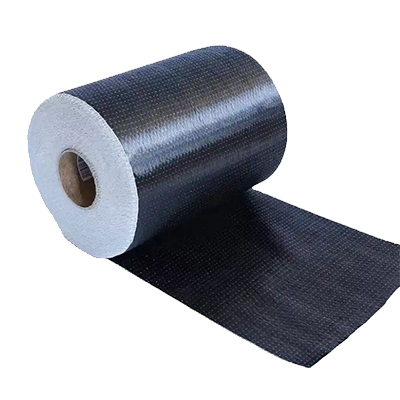Composite Waste Disposal Regulations Tighten Worldwide
-
Table of Contents
“Global Standards Rise: Composite Waste Disposal Regulations Tighten for a Greener Future.”
In recent years, the global landscape of waste management has undergone significant transformation, particularly concerning composite waste disposal regulations. As environmental concerns intensify and the impact of improper waste disposal becomes increasingly evident, governments and regulatory bodies worldwide are tightening regulations to address the complexities associated with composite materials. These materials, often composed of multiple substances that can be challenging to recycle or dispose of, pose unique environmental risks. Stricter regulations aim to promote sustainable practices, enhance recycling efforts, and mitigate the adverse effects of composite waste on ecosystems and public health. This shift reflects a growing recognition of the need for comprehensive strategies to manage waste responsibly in an era of heightened environmental awareness.
Global Trends in Composite Waste Disposal Regulations
In recent years, the global landscape of composite waste disposal regulations has undergone significant transformation, reflecting an increasing awareness of environmental sustainability and public health concerns. As composite materials, which are often made from a combination of plastics, metals, and other substances, become more prevalent in various industries, the need for effective waste management strategies has become paramount. This shift is not merely a response to the growing volume of composite waste but also a proactive measure to mitigate the environmental impact associated with improper disposal.
Countries around the world are recognizing the necessity of tightening regulations surrounding composite waste disposal. For instance, the European Union has been at the forefront of this movement, implementing stringent directives aimed at reducing waste and promoting recycling. The EU’s Circular Economy Action Plan emphasizes the importance of sustainable product design and waste management, encouraging member states to adopt more rigorous standards for the disposal of composite materials. This initiative not only aims to minimize landfill use but also seeks to enhance the recovery of valuable materials from composite waste, thereby fostering a more circular economy.
Similarly, in North America, regulatory bodies are beginning to take a more active role in addressing the challenges posed by composite waste. The United States Environmental Protection Agency (EPA) has initiated programs that focus on the safe disposal and recycling of composite materials, particularly in industries such as construction and automotive manufacturing. These programs are designed to educate businesses about best practices for waste management and to encourage the development of innovative recycling technologies. As a result, companies are increasingly held accountable for their waste disposal practices, leading to a gradual shift towards more sustainable operations.
In Asia, countries like Japan and South Korea are also tightening their regulations on composite waste disposal. Japan, known for its advanced waste management systems, has implemented strict guidelines that require manufacturers to take responsibility for the entire lifecycle of their products, including end-of-life disposal. This approach not only reduces the burden on landfills but also promotes the recycling of composite materials, thereby conserving resources. South Korea has similarly adopted a comprehensive waste management strategy that includes incentives for recycling and penalties for non-compliance, reflecting a growing commitment to environmental stewardship.
As these global trends unfold, it is essential to recognize the role of international cooperation in addressing the challenges of composite waste disposal. Organizations such as the United Nations and various environmental NGOs are working to facilitate dialogue and share best practices among nations. This collaborative effort is crucial, as it allows countries to learn from one another’s experiences and develop more effective regulatory frameworks. Furthermore, the exchange of technological innovations in recycling and waste management can significantly enhance the capacity of nations to handle composite waste responsibly.
In conclusion, the tightening of composite waste disposal regulations worldwide signifies a critical shift towards more sustainable practices in waste management. As countries implement stricter guidelines and promote recycling initiatives, the emphasis on environmental responsibility is becoming increasingly evident. This trend not only addresses the immediate challenges posed by composite waste but also lays the groundwork for a more sustainable future. By fostering international collaboration and encouraging innovation, the global community can work together to ensure that composite materials are managed in a way that protects both the environment and public health.
Impact of Stricter Composite Waste Regulations on Industries
As global awareness of environmental issues continues to rise, industries are increasingly confronted with stricter composite waste disposal regulations. These regulations, aimed at mitigating the environmental impact of composite materials, are reshaping operational practices across various sectors. The implications of these changes are profound, affecting not only compliance costs but also innovation and sustainability strategies within industries that rely heavily on composite materials.
To begin with, the tightening of regulations necessitates a reevaluation of waste management practices. Industries that produce or utilize composite materials, such as aerospace, automotive, and construction, must now invest in more sophisticated waste disposal methods. This shift often involves adopting advanced recycling technologies or developing new processes that minimize waste generation. Consequently, companies are compelled to allocate resources towards research and development, which can strain budgets, particularly for smaller enterprises. However, while the initial financial burden may be significant, the long-term benefits of adopting sustainable practices can lead to cost savings and enhanced brand reputation.
Moreover, the stricter regulations are driving innovation within the composite materials sector. As companies seek to comply with new standards, they are increasingly motivated to explore alternative materials and production techniques that are less harmful to the environment. This trend is evident in the growing interest in bio-based composites and recyclable materials, which not only align with regulatory requirements but also appeal to environmentally conscious consumers. By fostering a culture of innovation, industries can position themselves as leaders in sustainability, potentially gaining a competitive edge in the marketplace.
In addition to promoting innovation, the tightening of composite waste regulations is also influencing supply chain dynamics. Companies are now more inclined to collaborate with suppliers who prioritize sustainable practices, thereby creating a ripple effect throughout the supply chain. This shift encourages suppliers to adopt eco-friendly materials and processes, ultimately leading to a more sustainable industry ecosystem. As a result, businesses that fail to adapt may find themselves at a disadvantage, as customers increasingly favor partners who demonstrate a commitment to environmental stewardship.
Furthermore, the impact of stricter regulations extends beyond individual companies to the broader economy. As industries adapt to new compliance requirements, there is potential for job creation in sectors focused on waste management, recycling, and sustainable materials development. This transition not only supports economic growth but also contributes to the development of a green economy, which is becoming increasingly vital in the face of climate change. Consequently, governments and regulatory bodies are recognizing the importance of supporting industries in this transition, often providing incentives for companies that invest in sustainable practices.
However, it is essential to acknowledge the challenges that accompany these regulatory changes. Industries may face difficulties in navigating the complex landscape of compliance, particularly as regulations vary significantly across regions. This inconsistency can create barriers to trade and complicate international operations for companies that rely on global supply chains. Therefore, it is crucial for businesses to stay informed about regulatory developments and engage with policymakers to advocate for clear and consistent guidelines.
In conclusion, the tightening of composite waste disposal regulations is reshaping industries worldwide, prompting a shift towards more sustainable practices. While the transition may present challenges, it also offers opportunities for innovation, collaboration, and economic growth. As companies adapt to these new realities, they not only contribute to environmental protection but also position themselves for success in an increasingly eco-conscious market. Ultimately, the impact of these regulations will be felt across the entire value chain, fostering a more sustainable future for all stakeholders involved.
Innovations in Composite Waste Management Solutions
As global awareness of environmental issues continues to rise, the need for effective composite waste management solutions has become increasingly urgent. Composites, which are materials made from two or more constituent materials with significantly different physical or chemical properties, are widely used in various industries, including aerospace, automotive, and construction. However, the disposal of composite materials poses significant challenges due to their complex structure and resistance to degradation. In response to tightening regulations on composite waste disposal worldwide, innovative solutions are emerging to address these challenges and promote sustainable practices.
One of the most promising innovations in composite waste management is the development of advanced recycling technologies. Traditional recycling methods often fall short when it comes to composites, as the materials are typically bonded together in a way that makes separation difficult. However, new techniques, such as chemical recycling, are being explored to break down composite materials into their constituent parts. This process not only allows for the recovery of valuable raw materials but also reduces the volume of waste sent to landfills. By converting waste composites into reusable feedstock, these technologies contribute to a circular economy, where materials are continuously repurposed rather than discarded.
In addition to recycling advancements, the use of bio-based composites is gaining traction as a sustainable alternative to traditional materials. These bio-composites, made from renewable resources such as plant fibers and biopolymers, offer the potential for reduced environmental impact throughout their lifecycle. As regulations become stricter, industries are increasingly turning to bio-based composites to meet compliance requirements while also appealing to environmentally conscious consumers. The development of these materials not only addresses waste disposal concerns but also aligns with broader sustainability goals, fostering a shift towards greener manufacturing practices.
Moreover, the integration of digital technologies into composite waste management is revolutionizing the way companies approach waste disposal. The implementation of data analytics and artificial intelligence allows for more efficient tracking and management of composite waste streams. By utilizing smart sensors and IoT devices, businesses can monitor their waste generation in real-time, enabling them to identify patterns and optimize their waste management strategies. This data-driven approach not only enhances compliance with regulations but also promotes resource efficiency, ultimately leading to cost savings and reduced environmental impact.
Collaboration among stakeholders is also essential in driving innovation in composite waste management. Industry partnerships, government initiatives, and academic research are increasingly focused on developing comprehensive solutions that address the complexities of composite waste. For instance, collaborative research projects aim to explore new materials and recycling methods, while regulatory bodies work to establish clear guidelines that encourage sustainable practices. By fostering a culture of collaboration, stakeholders can share knowledge, resources, and best practices, accelerating the development and implementation of effective waste management solutions.
As the world grapples with the implications of composite waste, it is clear that innovation is key to overcoming the challenges posed by these materials. From advanced recycling technologies and bio-based alternatives to the integration of digital tools and collaborative efforts, the landscape of composite waste management is evolving rapidly. As regulations tighten globally, these innovations not only help industries comply with new standards but also pave the way for a more sustainable future. By embracing these solutions, businesses can contribute to a circular economy, reduce their environmental footprint, and ultimately play a vital role in protecting the planet for future generations.
Q&A
1. **Question:** What are composite waste disposal regulations?
**Answer:** Composite waste disposal regulations govern the management and disposal of waste materials that consist of multiple components, often including plastics, metals, and organic materials, to ensure environmental protection and public health.
2. **Question:** Why are composite waste disposal regulations tightening worldwide?
**Answer:** Regulations are tightening due to increasing environmental concerns, the need to reduce pollution, and the growing awareness of the negative impacts of improper waste management on ecosystems and human health.
3. **Question:** What are the potential impacts of stricter composite waste disposal regulations?
**Answer:** Stricter regulations may lead to improved recycling rates, reduced landfill use, increased costs for waste management companies, and greater innovation in waste processing technologies.Composite waste disposal regulations are tightening worldwide due to increasing environmental concerns, the need for sustainable waste management practices, and the growing recognition of the hazards posed by composite materials. These regulations aim to minimize environmental impact, promote recycling and recovery, and ensure safe handling and disposal methods. As countries implement stricter guidelines, industries must adapt to comply with these regulations, fostering innovation in waste management technologies and practices. Ultimately, the tightening of composite waste disposal regulations reflects a global commitment to environmental protection and sustainability.











